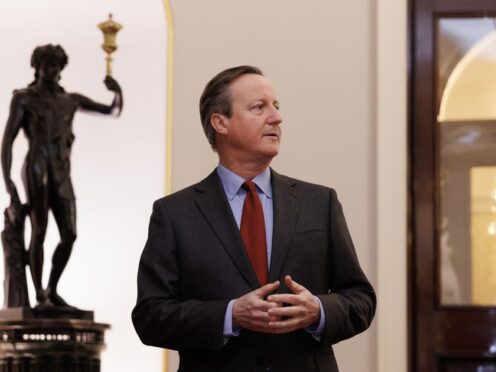Nato members must all meet the commitment to spend 2% of GDP (gross domestic product) on defence as it is “the best way to prepare for the American elections in the autumn”, Lord Cameron has said.
The Foreign Secretary urged all members of the alliance to meet the spending commitment as he attended a Nato meeting in Brussels with his counterparts from across the alliance.
Donald Trump, who is likely to be the Republican candidate for US president in this year’s elections, has been an outspoken critic of Nato members who have not met the target.
Speaking as he arrived in Brussels, Lord Cameron said: “The most important thing we can do to make sure this alliance continues to grow and continues to strengthen is to ensure that we all spend over 2% of our GDP on defence.
“Many more countries are now doing that, but we need every country to do that.
“Frankly, that is the best thing to do to make sure the Nato summit in Washington this summer is a success, and it is also the best way to prepare for the American elections in the autumn, whatever their outcome may be.”
The UK currently spends approximately 2.2% of GDP on defence spending but Chancellor Jeremy Hunt has vowed this will rise to 2.5% “as soon as economic conditions allow”.
This year marks 10 years since Nato allies committed to invest at least 2% of their GDP on defence spending at a summit in Wales.
The 2024 Washington Nato summit is scheduled to begin on July 9, a week before the US Republican party meets for its national convention, where Mr Trump is expected to be selected as its presidential candidate.
